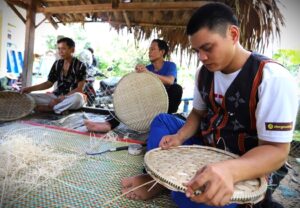Five-coloured sticky rice: A vibrant symbol of Thai culture and heritage in Dien Bien
A standout in the culinary traditions of Dien Bien Province’s ethnic groups is xoi ngu sac, or five-coloured sticky rice, a signature dish of the Thai people. This vibrant dish is a central feature of their festivals and New Year celebrations, admired not only for its visual appeal and fragrant aroma but also for the deeper cultural meanings it embodies.
Xoi ngu sac (five-coloured sticky rice) is composed of five distinct colours: white, purple, blue, yellow, and red, showcasing the remarkable skill of Thai women. Each hue is naturally derived from various roots, plants, leaves, and flowers, either foraged from the forests or grown in their gardens. More than just a feast for the eyes, these colours symbolise the five elements—metal, wood, water, fire, and earth—as well as various hopes and human emotions.
White, the natural colour of glutinous rice, represents pure and enduring love, respect, and filial piety.
Red, produced from gac (sweet gourd) fruit or red cam leaves, symbolises a zest for life and hope for a bright future.
Yellow, extracted from the bo phon flower, stands for prosperity and abundance.
Purple, made from purple cam leaves, symbolises the fertility and richness of the land.
Blue, derived from the butterfly pea flower, evokes the lush vitality of the forests and fields.
To ensure the perfect texture, the glutinous rice – grown on upland fields – is soaked overnight, drained, and then steamed in a traditional wooden steamer. The heat must be carefully controlled, neither too high nor too low, to cook the rice evenly without turning it mushy. To keep the colours distinct, a wooden frame with dividers is often used, with each batch steamed for about 45 minutes.
In traditional Thai gatherings, a tray of xoi ngu sac takes pride of place at the centre of the feast, its bright colours enhancing the setting. More than just food, it is a symbol of respect, embodying the Thai people’s reverence for their ancestors and elders.
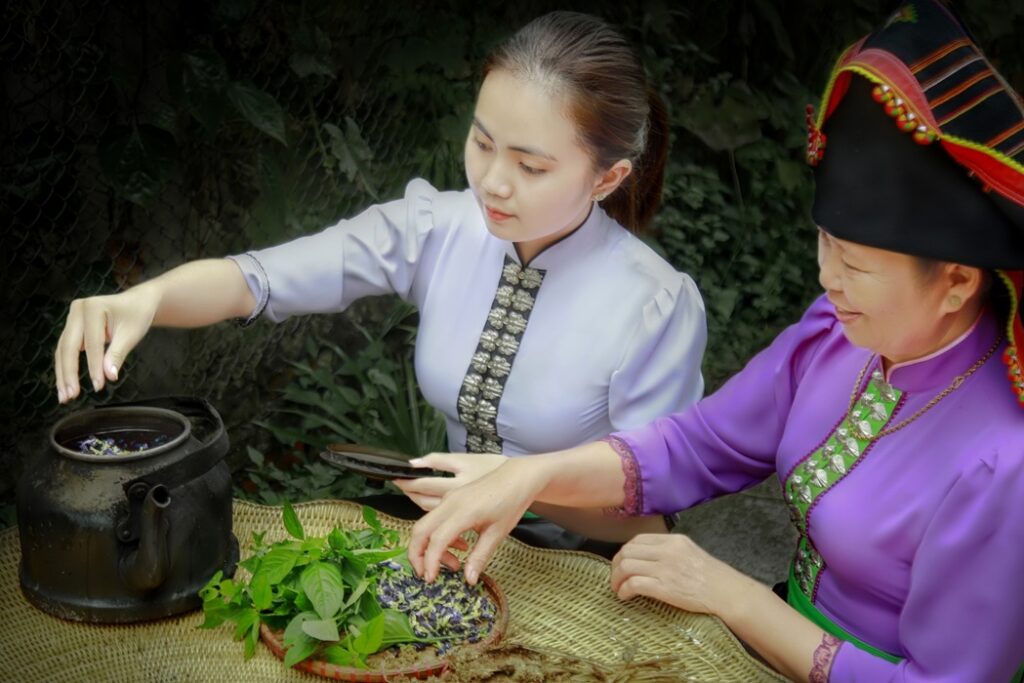
The sticky rice is dyed with natural colours from leaves and flowers.
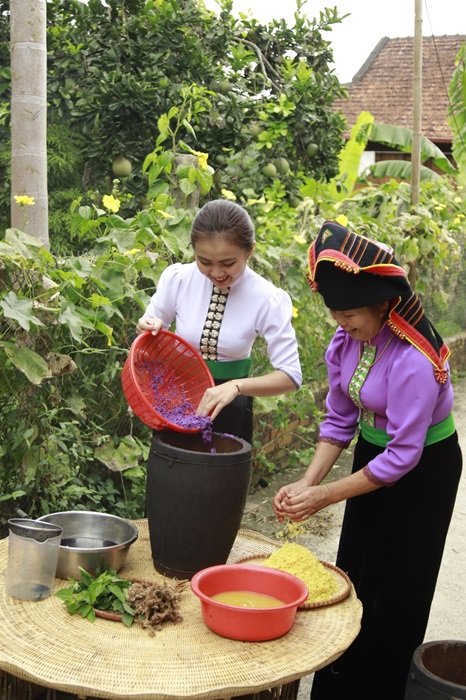
After draining, it is steamed to perfection.
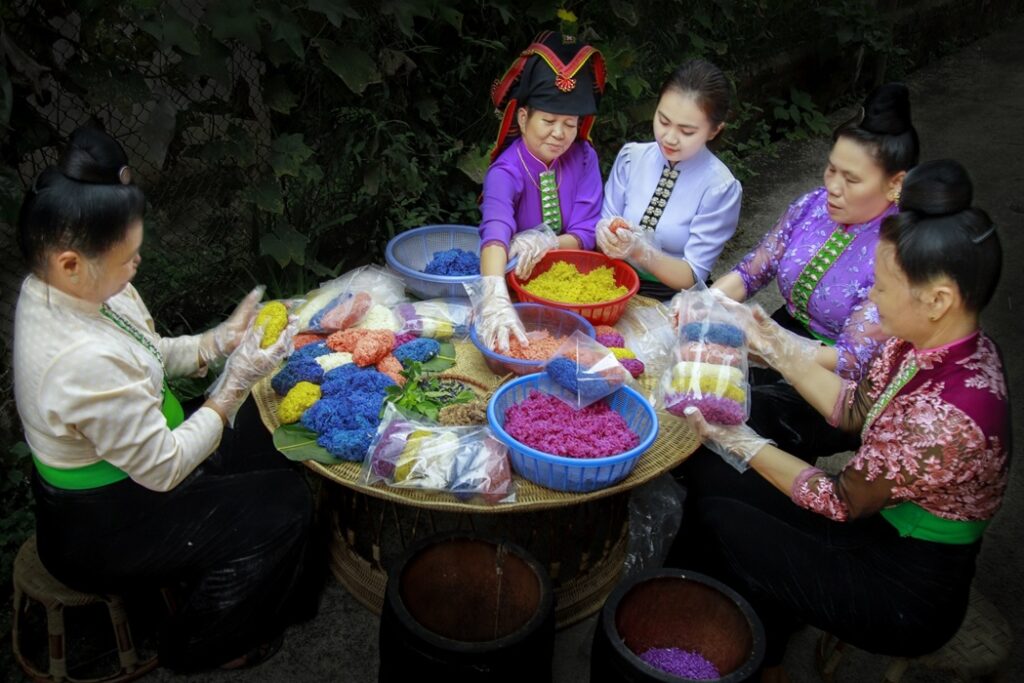
Today, xoi ngu sac is not only a family favourite but also sold commercially.
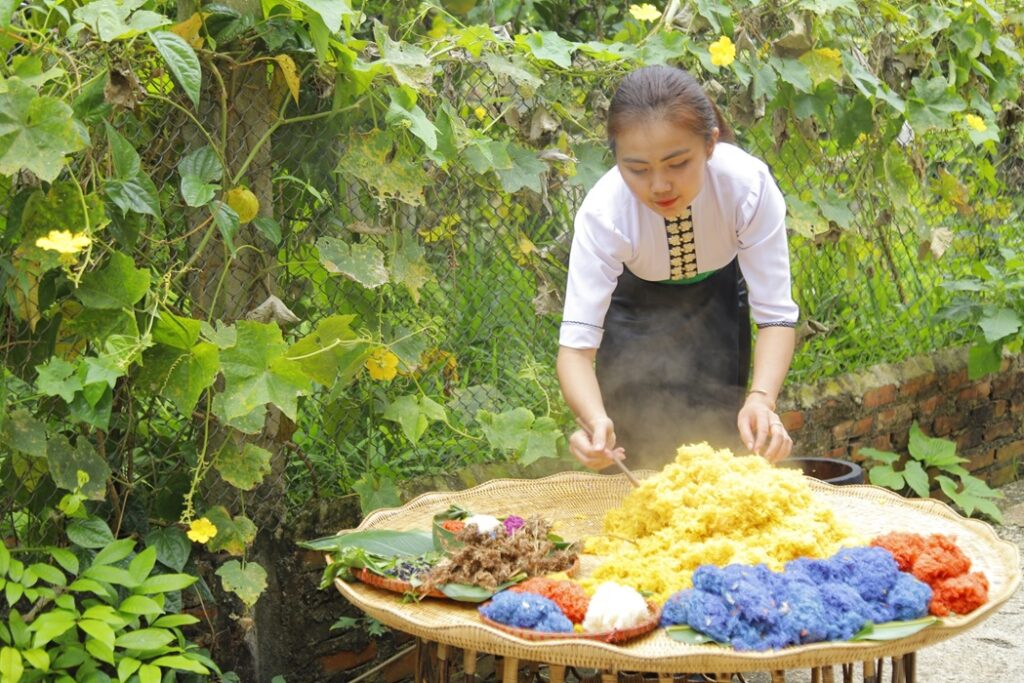
Once cooked, the rice is fluffed and shaped into bite-sized portions.
Anh Tuan
Dien Bien Phu News – en.baodienbienphu.com.vn

